After a decade of significant growth, Apple's Mac sales have flattened out as the larger market for PCs has begun to collapse. What future is there in the Mac business, and why is the company now designing a new Mac Pro?
Apple's recent history with iOS has been nothing short of unprecedented and incredible. The iPhone has sold so well that critics have all shifted from complaining that Steve Jobs was unrealistically optimistic when he said he hoped Apple could account for 1 percent of all phones sold within its second year to a complete 180, demanding that the company make a cheaper model capable of eating up the portion of sales in developing countries that Apple doesn't already dominate.
And at the same time, Wall Street is now "concerned" that too many people are choosing to buy the more affordable, two and a half year old iPhone 4. There's no worries, of course, that Android licensees, including Samsung, have been achieving their market share numbers largely by selling not just outdated hardware but outdated versions of Android, too, at much lower profit margins than Apple has been earning.
While Apple's success with iOS gives it the luxury of being cursed for not having cheap enough products and at the same time lamented for not selling a mix favoring more expensive models, its Mac business is simply plugging along as the only PC maker left that isn't losing its sales to iPad. IDC noted that global PC sales fell 14 percent in the first quarter of 2013, twice the drop it had predicted.
Unlike the iPhone, Apple can't simply sell 2 year old Mac designs at a subsidized discount to a hungry audience. Apple released the cheaper Mac mini in 2005 without stoking intense new demand. The majority of Apple's Mac sales are notebooks, all of which are now premium models precision crafted from thin wedges of aluminum. Compared to iPods, iPhones and iPads, Apple's Mac sales volumes are relatively minimal.
But Apple's Macs are premium machines in an industry that has been specializing in low end, disposable hardware for decades. This has allowed Apple to collect the lion's share of profits in the PC industry. According to a report by Asymco, Apple's Mac generates more profits that the top five PC makers combined.
From All-Mac to Also-Mac
It's not hard to see why Apple has been focusing much of its attention on mobile devices: that's where the money is. At the beginning of 2001, the year the iPod debuted, Apple announced winter quarter sales of just 659,000 Macs. Five years later, Apple was up to selling about twice as many Macs (1.254 million) but was now selling more than 14 million iPods, too.
The tremendous success of the iPod caused some pundits to speculate that Apple would (or perhaps should) drop the Mac and focus on just selling iPods. What they didn't know was that Apple was planning to use Mac technologies to develop an iPod successor.
Five years later at the start of 2010, Apple reported sales of 3.36 million Macs, 21 million iPods and 8.7 million new iPhones. It then released the new iPad.
Three years later (just last week) Apple announced sales of just under 4 million Macs, 37.4 million iPhones and 19.5 million iPads. That's nearly 57 million iOS devices (not including iPod touch) being sold per quarter, far outpacing Macs.
Same but different
Of course, iOS devices are actually compact Macs, sharing a nearly identical core os, development frameworks and app code (including their Safari WebKit browser). What's different is the user interface: Macs use an advanced version of the windowing, mouse-driven environment it debuted with back in 1984. In 2007, Apple introduced a new multitouch user interface designed expressly for handheld mobile devices.
Over the past few years, Apple has cross pollinated the Mac and iOS devices, introducing many common user interface and usability concepts ranging from multitouch gestures and Dictation to an App Store for desktop software. Apple's next big push in services, iCloud, appeared with support for both Macs and iOS.
Despite sharing lots of technology and features between the Mac and iOS, Apple hasn't pursued Microsoft's strategy of melding its desktop and mobile device platforms with a common, hybrid user interface. Instead, the Mac has remained a conventional computer without a touchscreen. How long can Apple afford to devote significant resources to maintaining the Mac when there's so much more opportunity for growth and revenues on the iOS side?
Mac Pro now a fraction of the Mac's fraction
Macs have steadily become more mobile. Over the past decade, desktop Macs have shrunk from the majority of Apple's computer sales, to being tied with notebooks, to now being a small minority. Most of Apple's desktop Macs are iMacs, leaving its Mac Pro a tiny island within quarterly sales of around 4 million machines.
As a workstation class system, the Mac Pro now makes up such a small percentage of Apple's Mac sales that it hasn't been significantly updated since 2010. And in Europe, sales have ceased entirely because the existing design no longer meets stringent manufacturing standards related to exposed fan blades and other features.
If Apple's chief executive Tim Cook hadn't already promised an update to the company's full sized desktop this year, it would be very believable to think it might just ride into the sunset with the discontinued Xserve.
Franz,
Thanks for your email. Our Pro customers like you are really important to us. Although we didn’t have a chance to talk about a new Mac Pro at today’s event, don’t worry as we’re working on something really great for later next year [2013]. We also updated the current model today.
We’ve been continuing to update Final Cut Pro X with revolutionary pro features like industry leading multi-cam support and we just updated Aperture with incredible new image adjustment features.
We also announced a MacBook Pro with a Retina Display that is a great solution for many pros.
Tim
Unlike the Xserve, which was speculatively designed to serve a market that was already well served, the Mac Pro (and before that, the Power Mac) was built for Apple's mainstream desktop professional users. Over the past decade however, a number of shifts in technology have enabled more and more of the Mac Pro's potential audience to be better served by speedy notebooks with large displays or, in some cases, the simplicity of the iMac.
The central core audience of Apple's power users, including professionals in print, audio and video production as well as science and engineering, are often still looking for more computing power than a notebook can deliver. Rather than beefing up the iMac to accommodate such users, Apple made it more stylish and thin last fall.
This has left a place open for a future new Mac Pro, even if its target demographic is relatively small. Apple could seek to broaden the appeal of the desktop computer, or it can instead simply deliver a really high end, attention getting workstation just for bragging rights. Apple did something similar last fall when it introduced the Retina Display MacBook Pro, an extremely high end luxury notebook that was so expensive that it needed last year's models to stick around in order to provide more affordable alternatives.
If you're taking note, that's the same pricing strategy Apple used with iPhone 5 and the new iPod touch, both of which are accompanied by a year or two of previous models serving as cheaper options.
What does Apple need in a new Mac Pro?
It's unlikely Apple will do the same thing for the existing Mac Pro, if for no other reason than the market is just too small. Users after a more affordable Mac can always opt for an iMac (the new models of which are no slouch in the performance department) or a MacBook Pro, both of which score about as fast as a two year old Mac Pro, according to GeekBench stats. So the new Mac Pro will need to squarely hit its target audience. But what is that?
Originally, the Mac Pro delivered the cutting edge of speed on Apple's platform. After the Xserve was discontinued, it served double duty as Apple's server offering. The bulk of Apple's Mac Pro sales were targeted toward desktop power users, many of whom were using tools like Photoshop and Final Cut Pro that could make use of more RAM, disk storage and processor cores than are even available on other Macs. In addition, Mac Pros can accommodate PCI expansion cards including graphics coprocessors.
After a decade of building up a suite of Pro Apps (Final Cut Studio, Logic, Aperture) demanding a pro Mac, in addition to efforts to build serious server tools (ranging from Xsan storage to Xgrid distributed processing), Apple seems to have lost its interest in the high end market in favor of the gangbusters consumer market for iOS devices. But there's reason to think it might make a comeback.
For one thing, while the market for high end workstations isn't growing tremendously, Apple's opportunity to enter the market has never been better. Just a few years ago, Apple had little chance wooing its way into many enterprise or government environments. Today, thanks to rapid adoption of iOS devices, Apple now has the ability to enter doors that were once locked up tight for anything other than Windows machines.
And of course, Macs have never been better at running Windows, either natively or right on the Mac desktop. At the same time, rival PC makers have never been weaker. HP, Dell and other market leaders who would previously have scoffed at Apple are now desperately trying to remake themselves into a form capable of surviving the mobilization of PCs. They're entirely dependent upon Microsoft to lead their software, and so far, that company has churned out a series of duds on both the desktop and mobile sides.
Apple can walk in with a solution for both easy mobile deployments via iOS and a high end workhorse in the Mac Pro. Apple needs to incrementally improve upon its deployment tools, but it does, finally, have a solution that works for both Macs and iOS devices.
Apple can't afford not to
There's no question that the market for a new Mac Pro is very limited. But Apple can't afford not to maintain a presence at the top of the PC performance hill, if for no other reason that there's a lot of technology that trickles downhill. The support for multiple cores and multiple processors that Apple built for Mac OS X is now becoming relevant in mobile devices. Apple's experience in dealing with both desktop and mobile architectures isn't common across the industry.
Last summer, Mike Bell, Intel's general manager of the Mobile and Communications Group, said that "the way it's implemented right now, Android does not make as effective use of multiple cores as it could, and I think - frankly - some of this work could be done by the vendors who create the SoCs, but they just haven't bothered to do it."
Apple's intimate knowledge of ARM design makes it likely that it could become the first PC maker to deliver usable ARM-based notebooks and desktop machines. Even if that's not around the corner for the Mac Pro, there are other technologies for it that have originated on lower end machines.
On the subject of multiple cores, Apple has worked on a variety of technologies to take advantage of both multiple processors within a system and multiple systems on a network. Grand Central Dispatch lets OS X effectively schedule tasks to fill the pipelines on multiple cores across multiple processors, including different types such as the GPU. In addition, Apple also deployed Xgrid to farm out tasks across a network of idle machines, although it abandoned the technology around 2007.
A more modern technology, Thunderbolt, has never made it to the Mac Pro. Because Thunderbolt is essentially PCIe via a cable, Apple could conceptually use Thunderbolt rather than large open slots in a big enclosure to retain the Mac Pro's expansion potential. Imagine a smaller unit with the ability to interface with an external box housing expansion cards, including video adapters. The majority of PC users never make any use of the PCI slots in their systems. Apple recognized this with the Mac mini and iMac, which connect to peripherals via USB. Thunderbolt makes the same thing possible for the Mac Pro.
Thunderbolt could also potentially serve as an extremely fast interconnect for linking multiple systems together to allow for ad hoc super computing. Intel recently announced support for an even faster Thunderbolt specification, providing up to 20Gb/s connectivity.
Another shift that appears likely is the removal of optical media. AppleInsider noted last August that internal references to USB Booting indicated that next iMac and Mac Pro would likely drop their optical drives. The new iMac has, and the Mac Pro appears next, given that it is now the last model to retain one.
If Apple could radically rethink the desktop computer into a more modular, flexible form, it could deliver a compact box that scales from a serious game machine to stackable cluster nodes to a high end workstation, potentially expanding its allure to eat up multiple segments of the valuable remains of the vast PC market.
 Daniel Eran Dilger
Daniel Eran Dilger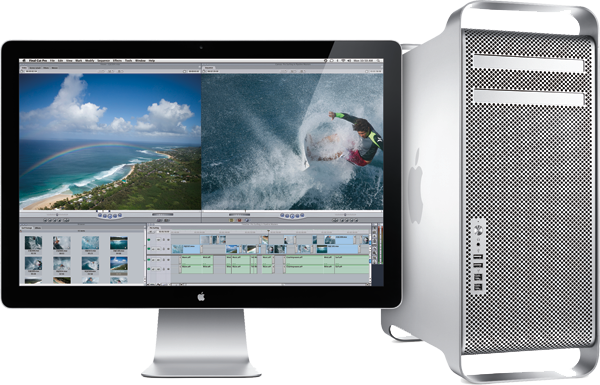
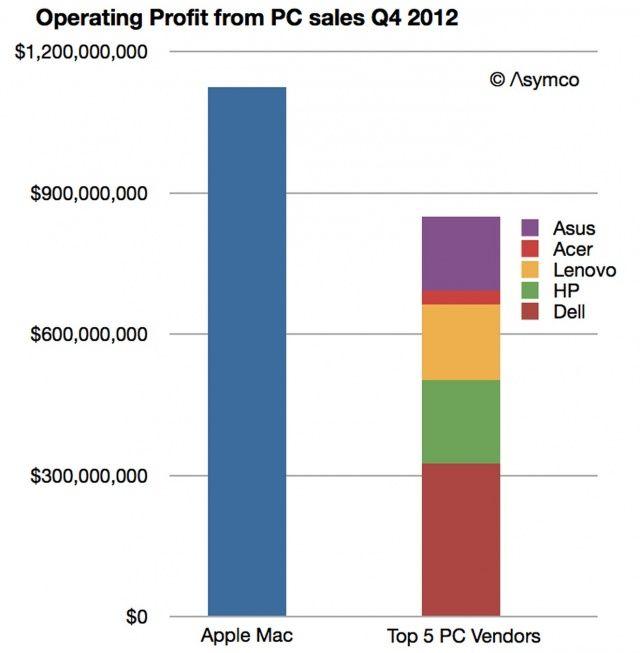

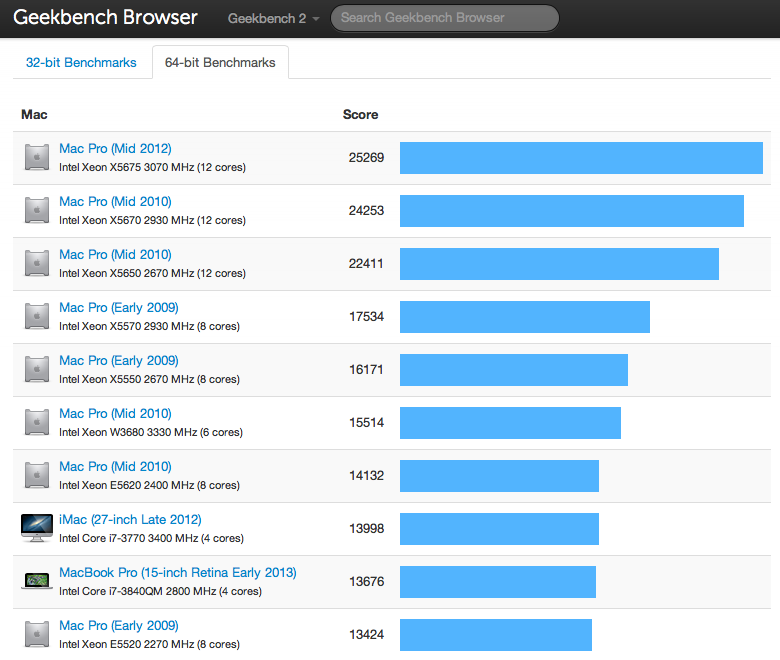
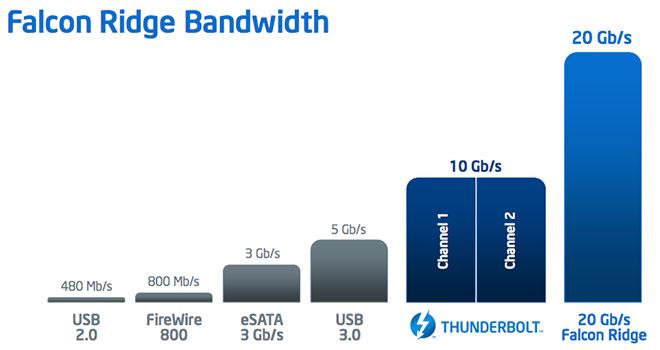
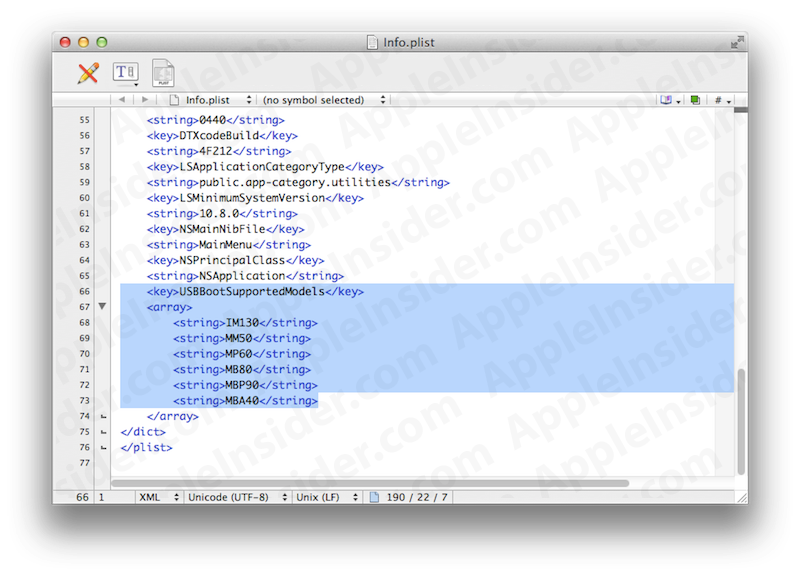







-m.jpg)





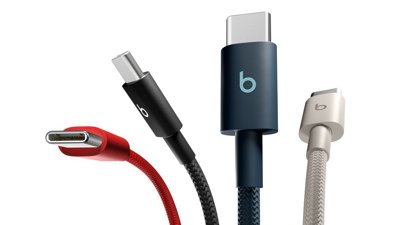
 Malcolm Owen
Malcolm Owen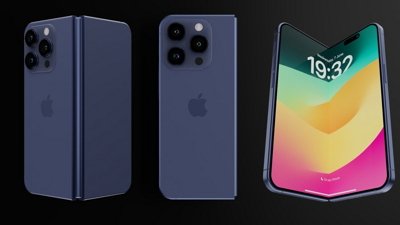
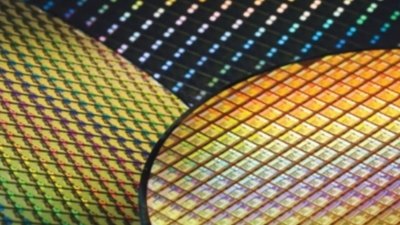
 William Gallagher
William Gallagher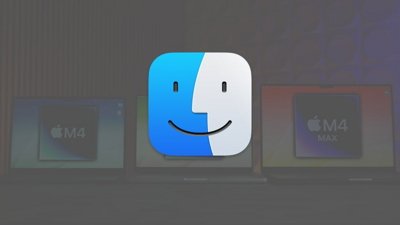
 Chip Loder
Chip Loder
 Brian Patterson
Brian Patterson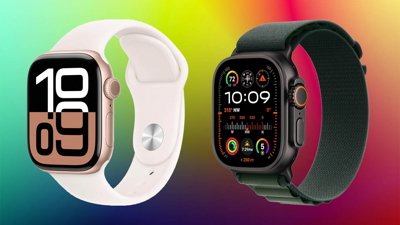
 Christine McKee
Christine McKee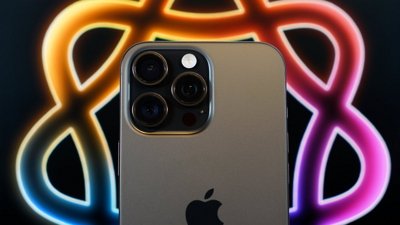
 Wesley Hilliard
Wesley Hilliard
 Amber Neely
Amber Neely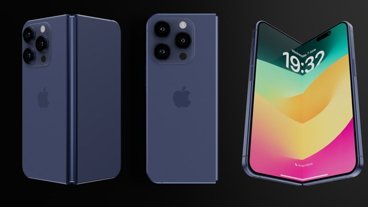
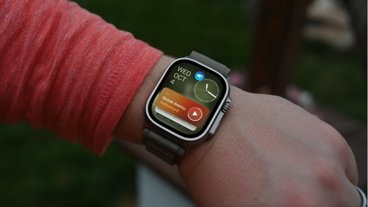
-m.jpg)






198 Comments
iMac Pro?
[QUOTE]As a workstation class system, the Mac Pro now makes up such a small percentage of Apple's Mac sales that it hasn't been significantly updated since 2010. [/QUOTE] The iPod Classic hasn't been updated since 2009, because it's not selling or because Apple doesn't want it to sell or both. [QUOTE]Apple's intimate knowledge of ARM design makes it likely that it could become the first PC maker to deliver usable ARM-based notebooks and desktop machines.[/QUOTE] Starting with the MacBook Air, of course. It's absolutely inevitable. Apple will avoid the Intel Tax, and will undercut Intel-based "Ultrabook" pricing. And it would more strongly differentiate the consumer MacBooks from the MacBook Pros. (If the MacBook Pros continue to use legacy Intel chips.) [QUOTE]Thunderbolt could also potentially serve as an extremely fast interconnect for linking multiple systems together to allow for ad hoc super computing.[/QUOTE] Agree. Eventually, the Mac Pro could be composed of snap-together modules with Thunderbolt connectors. The basic Mac Pro would have one CPU module, one storage module, a power module, a Display Adapter module, plus an Apple Thunderbolt Display. (And maybe that would be the Mac mini configuration, come to think of it.) You want a hard core number cruncher? Snap together 10 CPU modules. You want a video editing system? Snap together 4 CPU modules and 20 storage modules. The modules would be held together with magnets a la iPad Smart Cover, with near-flush Thunderbolt and power connectors. If you want more security, Apple could sell you lockable enclosures in different sizes. And, if you're feeling really retro, there might be 3rd party FireWire / USB / serial / parallel / SCSI modules too.
What will they do with it? Turn it into a fully multitouch desktop platform and re-revolutionize the personal computer for the third time in 38 years.
The iPod Classic hasn't been updated since 2010 either.
September 2009, which itself was only a hard drive bump from the previous model (the old 80 and 160 were different thicknesses; the present 160 is as thin as the old 120, which was as thin as the 80, and which was), released in September 2008.
So it went 80-thin & 160-fat to 120-thin to 160-thin.
The Mac is not going anywhere. Imagine an alternative history where Apple had never made computers and had started with the iPod, then the iPhone and iPad. What would the endless chorus from the media be? "When will they make a laptop"
I think the Mac Pro is the most likely product to have its manufacturing moved to the US. Cook stated last year they had planned to move a whole product line to the US for manufacturing, a comment that seems to have been forgotten by the tech press in the rush to proclaim the doom of the company. The Mac Pro is the perfect product line to make in the US. Small volumes, comparatively, make it easier to ship parts from other parts of the world. No built-in screen takes out another source of parts that is usually made somewhere else in the world. The high margins of the Mac Pro means that they can easily absorb the higher labor and manufacturing costs in the US. None of the other Apple product lines are as amenable to manufacture in the US, save perhaps the Mac Mini. However, the shipment volumes are larger there, and so are the logistics involved. The question is where are these going to be made? Even with the smaller volume of Mac Pros being shipped, it's going to require a fairly decent-sized facility. Has Apple already set up such a facility and starting manufacturing already and nobody noticed?